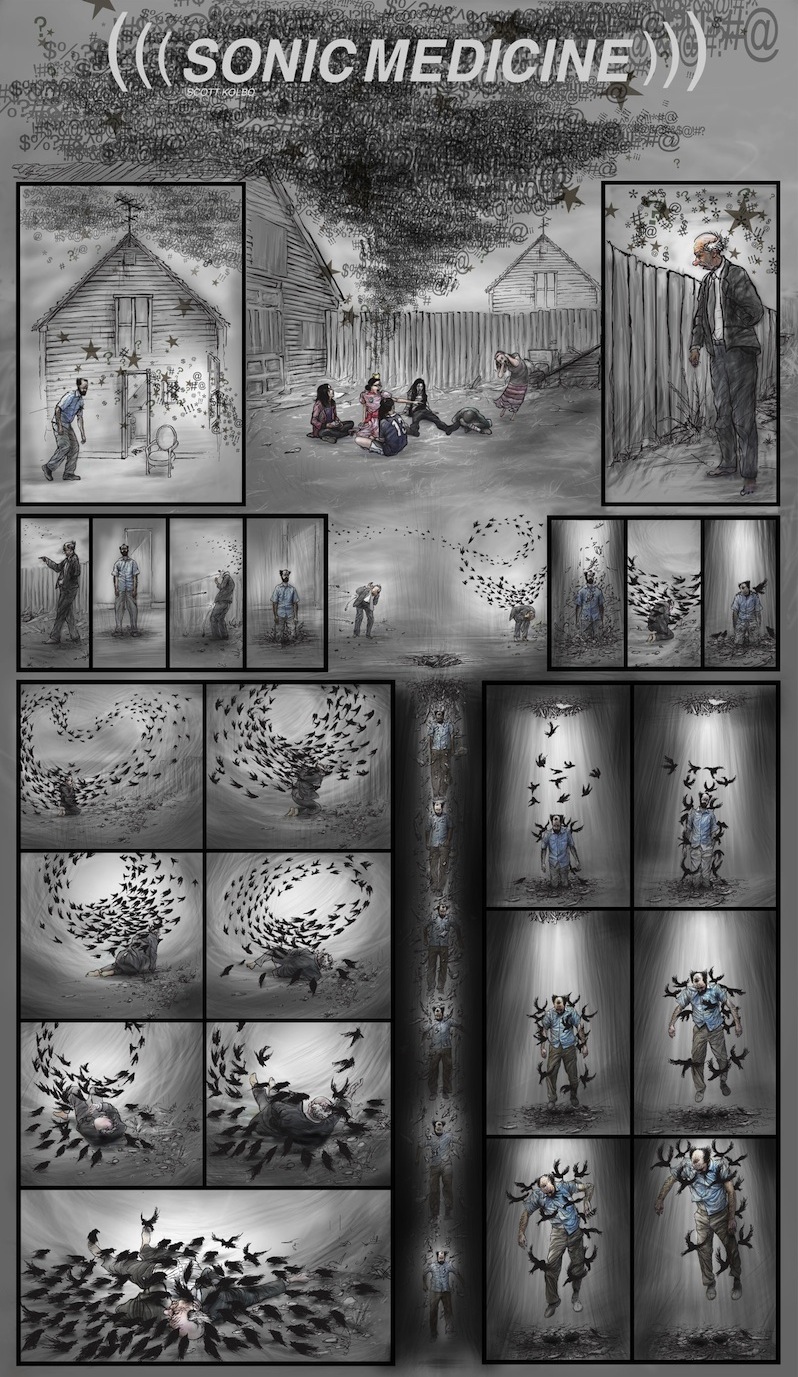Regarding Sonic Medicine
"Perspicuous Objects" is accompanied by Scott Kolbo's (2013b) "Sonic Medicine" broadside, a comic designed to be viewed as a single large page. Besides being (if you ask me) a beautiful and worthwhile piece of work to spend some time contemplating, "Sonic Medicine" will come up in notes throughout "Perspicuous Objects," and it makes a great mental warmup for thinking about how meaning emerges from visual narratives. I've included my own extended reading of "Sonic Medicine," and you can download the broadside in a large (as in enormous) version, a middle-sized version, or a small version. It may be useful to know, at the start, that "Sonic Medicine" features a cast of characters familiar to those who know Scott's work: the Alley Kids, Jeremiah, and Heavy Man. (You might also take a look at this small collection of Scott's work to learn more.)



You could imagine "Sonic Medicine" (Kolbo, 2013b) printed in high resolution on a large sheet of paper. With this file (and a good printer), you could see it that way. You might also look at "Sonic Medicine" on screen, piece by piece, by scrolling down from this point on the page. Or you could save the image to your computer and try to get it to appear on your screen all at once, possibly approximating but by no means replicating the experience of seeing the broadside printed in the traditional way. You might be looking at "Sonic Medicine" on a tablet computer or some other kind of handheld device. You might be looking at it on large monitor or projecting it on a wall.
However you look at the broadside, you will eventually see something like a narrative with a beginning, middle, and end. The narrative branches off in a couple of directions and also moves (with the toss of a stone) from comics realism to artful symbolism, but it is clearly a narrative. You may at first experience the top of the page as more simple than what comes after—as something like a traditional text, where one word precedes the next in a logical and preordained way, left to right. But did you really read it left to right? Did you examine Heavy Man, then the Alley Kids, then Jeremiah? Or did you take in all three at once, moving in to see more details later? Did you see Heavy Man and Jeremiah as a pair and then contemplate their connection to the Alley Kids? What sort of path did your eyes trace as you made some sense out of the individual images and the broadside as a whole? To what extent did your mind convert the visual to words, and to what extent were the images themselves sufficient? How did you move from first impressions to some sort of reading? On this page I've included my attempt to illustrate some of the different ways that people read "Sonic Medicine." There are trends in the readings, but, even though the broadside is a single page there is clearly no one linear way of reading it. If you're interested, my extended reading is here, though you may want to develop your own interpretations before you read mine.



